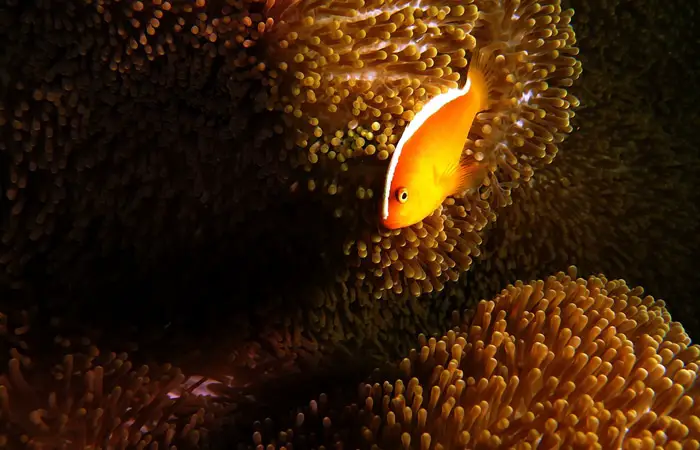-Even if you are in college.
Bill Nye the Science Guy hasn’t produced new episodes since the end of Season 5 in 1998, but the show’s namesake host remains active in the promotion of science – and many of his videos remain outstanding content to watch even if you’re in College (or beyond).
Here at Biology Junction, our focus is on our own namesake subject, and that’s what this list focuses on – but for those of you who came here for a more general list, we’ve also included a few non-Biology videos down at the bottom. These videos are helpful regardless of what type of science you’re interested in, so everyone should take a look at them.
How We Chose These Videos
What good is a list without an explanation of how we made it? It wouldn’t be good science if we just threw it up here! Truth is, though, creating this list wasn’t very hard. First, we narrowed our list of sources to the best selections of Bill Nye videos – his classic show and the more-recent Greatest Discoveries series.
Next, we considered how useful each topic is to know. For students studying biology, it does no good to dive into topics more advanced than you’re ready for. Fortunately, most of Bill Nye’s videos are accessible even to beginners and provide a strong foundation for the topic. This ended up being a minor concern, but we were determined to go through the process.
Finally, we checked for the availability of videos. It doesn’t help to be told to watch a video if you can’t find it. A simple search should be enough to locate any of the videos on this list. If that fails, you should be able to get them from your library or preferred streaming service. We had a preference for videos that are freely available since budgets can be tight in college, but that didn’t significantly impact this list.
For our non-Biology videos, we used a similar process. Instead of emphasizing Biology, though, we decided to focus on the foundations of science and the information that’s most useful for everyone to know.
The Best Biology Videos From Bill Nye
Here are our top choices for Biology videos.
1: Biodiversity (S1 E9)
Biodiversity is the 9th episode of Bill Nye the Science Guy, and while it’s not the first to feature a Biology topic, we think it’s easily one of the most important episodes. This video focuses on more than just where things live – it also explains the concept of ecosystems and how important it is to have a variety of living things in each area.

Arguably the most important lesson of this episode is understanding that ecosystems are far more complex than figuring out which living things eat each other. Each part of an ecosystem affects all of the other parts. That’s why we have to be so careful when introducing plants or animals to new habitats – if the ecosystem isn’t ready to handle it, the whole thing could collapse.
A second lesson to focus on is how ecosystems can vary in size – and, in many cases, overlap each other. The Great Barrier Reef has its own ecosystem, but it’s part of the larger Pacific Ocean – and from there, it ultimately affects all life on the planet (even if the impact isn’t obvious).
Understanding biodiversity is critical to understanding biology as a whole. Life does not exist in a vacuum – not unless we put it there, anyway. Environments affect life and vice versa, and if you want to understand why something is the way it is, you have to look at the bigger picture.
2: Cells (S1 E17)

Cells are a fundamental component of life – and even if you think you understand them, it’s good to get a refresher on the topic before you start your studies. The main reason for this is that when we say something “affects an organ”, what we mean is “it affects certain cells of the organ in a particular way”.
For example, if you want to understand why too much alcohol can hurt the liver, you need to look at its impact on the cells of the liver. If you want to heal that liver when you’re done, you have to figure out what will encourage the cells to do that. Cells are the ultimate “micro” topic in biology, making the Bill Nye cells video easily one of the most important episodes for biologists to watch.
3: Food Web (S2 E6)
It’s hard to talk about biology without eventually talking about food – but how things get their food is a little more complicated. Only watch this video after you’ve watched Biodiversity, because that video provides some important groundwork for this topic.
The short version is that a food web describes how each part of an ecosystem gets its food. Ultimately, each living thing gets food either from other living things (like insects, plants, or rodents) or from the sun. Every living creature is ultimately dependent on plants – who, let’s not forget, are often nourished by the uneaten bodies of dead creatures.
(If you’re having flashbacks to a certain Disney movie about a young lion, there’s a reason for that – the Circle of Life, where living things depend on each other, is quite real.) Watch Food Web
4: Plants (S3 E3)
Given how important plants are to the previous video, now’s a good time to get a refresher on what they are, how they work, and what sort of impact they have on our lives. The crazy thing is how plants can synthesize their own food as long as they have sunlight, water, and carbon dioxide – though healthy soil and a few other nutrients certainly help.

Plants are also important for their impact on other aspects of Biology. For example, many medicines are made from plants or plant by-products and affect certain living things in specific ways. Once we understand how something works, we can start figuring out the best way to make use of it.
This is particularly helpful if you’re looking for a job with biology. Most of your work will likely involve seeing how various inputs (types of food, situations, etc.) affect living things, and plants will be a part of that. Studying life alone is a limited topic – but there are endless possibilities when studying the way things affect life.
5: Populations (S3 E19)
Populations are a group of similar living things living in a set area. We often refer to the population of the human race, but we may also talk about the population of a specific city, voting district, or another region.

In biology, the most important thing is understanding the populations of other living things, how they’ve changed over time, and what’s caused them to do so. As you learned in videos like Biodiversity and Food Web, living things all affect each other – and a sudden rise or drop in one population will ripple across the ecosystem and begin affecting other creatures.
There may not be as many fancy names or scientific terms here, but it’s still worth watching this video to ensure you have a good grasp of the fundamentals of biology.
6: Biology – Greatest Discoveries
Finally, Bill Nye’s Greatest Discoveries video on Biology rounds out the best videos on this topic with a look at 13 of the most important discoveries in biology. This includes a discussion on the discovery and impact of:
- Microorganisms like bacteria, blood cells, and sperm
- The Cell Nucleus that functions at the center point of most cells
- Archaea, microorganisms that lack a cell nucleus but aren’t quite like bacteria
- Cell Division, the process of growth and, in many ways, life itself
- Sex Cells and how they differ from most other types of cells
- Cell Differentiation and how different types of cells are made
- Mitochondria, which are separate from cells but provide a critical function for metabolizing chemicals
- The Krebs Cycle, which is how protein, fats, and sugars are turned into energy
- Neurotransmission, which centralizes the body’s ability to control itself
- Hormones, which are far more complicated than teenage urges
- Photosynthesis, a process where light is turned into chemical energy
- Ecosystems, a quick look back at larger ecological units
- Tropical Biodiversity, or why warm and sunny places tend to have a much greater variety of life
Together, all of these are important for biologists to know.
The Best Overall Science Videos From Bill Nye
Whether or not you’re focused on biology, these videos are helpful for improving your overall understanding of science and are worth watching at any age.
1: Pseudoscience (S4 E9)
Many things that sound like science but aren’t. These things are often called pseudoscience, and learning how to recognize them is a valuable skill for any scientist. Fortunately, the entire topic can be brought down to a few simple principles.
First, science involves testing claims and ideas. If somebody says something can’t be tested, then it’s not within the realm of science and shouldn’t be treated as such. In those cases, it’s okay to say “perhaps we’ll never know for sure”.
Second, extraordinary claims require extraordinary proof. In other words, the more important your claim is, the more you need to support it with verifiable evidence. As the person making a claim, it is your job to provide corresponding proof. It is not the job of others to demonstrate that you’re right.
Furthermore, your results should be reproducible. Proper science only happens when someone tries to prove you wrong – fairly, of course – and fails to do so. If you repeat an experiment and keep getting results, you don’t have any answers – just more questions to ask.
Finally, you should learn critical thinking. This graphic is especially helpful for that and provides many questions that help you uncover the truth. For example, when presented with a claim, you may want to figure out who benefits from it, what the best/worst case scenarios of it are, where it might be a problem or solution, what might make it unacceptable, why people might need it, and how to approach it safely.
In many cases, purveyors of pseudoscience are simply looking to profit from your ignorance. As a scientist, it is your duty to see past things like that and uncover the truth. Watch Pseudoscience now.
2: Measurement (S5 E17)
Coming in as one of the last episodes ever aired, Measurement is something that honestly should have been one of the first videos they made. Measuring things is critical to the foundations of science as a whole. Proper measurements provide objective, verifiable information using a common set of standards, and it’s impossible to overstate how important this is.
There are a few important things to learn from this video, Measurement.
First, there are many ways of measuring things. You can measure units (members of a population), dimensions (the size of something), time (how long it takes something to happen), effects (what happens), and many other topics.
Second, you’ll learn why things should be measured. It’s not just to expand the amount of information we have, though that’s valuable in and of itself. Instead, measurements help us understand what’s different about two subjects so we can proceed to uncover why and how that difference occurred.
Taken far enough, this can lead to discoveries, such as finding that one person in a neighborhood didn’t get sick because they ate a particular herb.
Measurements are almost never a focus in and of themselves – but they’re a vital part of most scientific activities. If you want to be a scientist, then you’re almost certainly going to do a lot of measurements over the course of your career. That makes this innocent-sounding video one of the most helpful episodes of Bill Nye.








